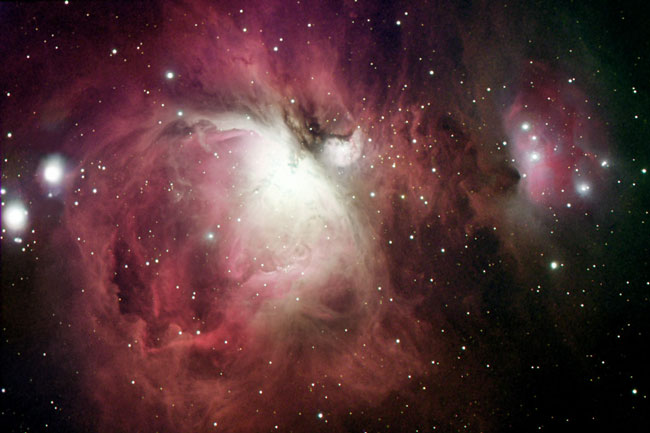Credit & Copyright: Robert Gendler
Explanation:
The
Great Nebula in Orion can be found just below
and to the left of the easily identifiable
belt of three stars in the popular
constellation Orion.
This fuzzy patch,
visible to the unaided eye,
contains one of the closest
stellar nurseries, lying at a distance of about 1500
light years.
The
above picture highlights red light emitted
by the nebula's hydrogen gas.
Dark
dust
filaments punctuate regions of this glowing hydrogen
gas and reflect light from the
nebula's brightest stars.
Recent observations of the
Orion Nebula by the
Hubble Space Telescope
have located
solar-system sized regions that are
thought to be planet-forming circumstellar disks.
1999 2000 2001 2002 2003 2004 2005 2006 2007 2008 2009 2010 2011 2012 2013 2014 2015 2016 2017 2018 2019 2020 2021 2022 2023 2024 2025 |
Январь Февраль Март Апрель Май Июнь Июль Август Сентябрь Октябрь Ноябрь Декабрь |
NASA Web Site Statements, Warnings, and Disclaimers
NASA Official: Jay Norris. Specific rights apply.
A service of: LHEA at NASA / GSFC
& Michigan Tech. U.
|
Публикации с ключевыми словами:
nebula - Orion - hydrogen - Orion Nebula - H-alpha - Туманность Ориона - M 42
Публикации со словами: nebula - Orion - hydrogen - Orion Nebula - H-alpha - Туманность Ориона - M 42 | |
См. также:
Все публикации на ту же тему >> | |
